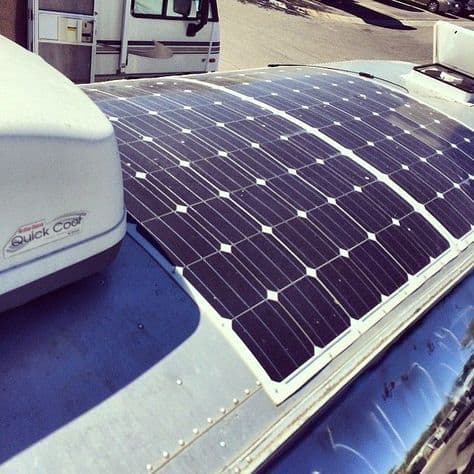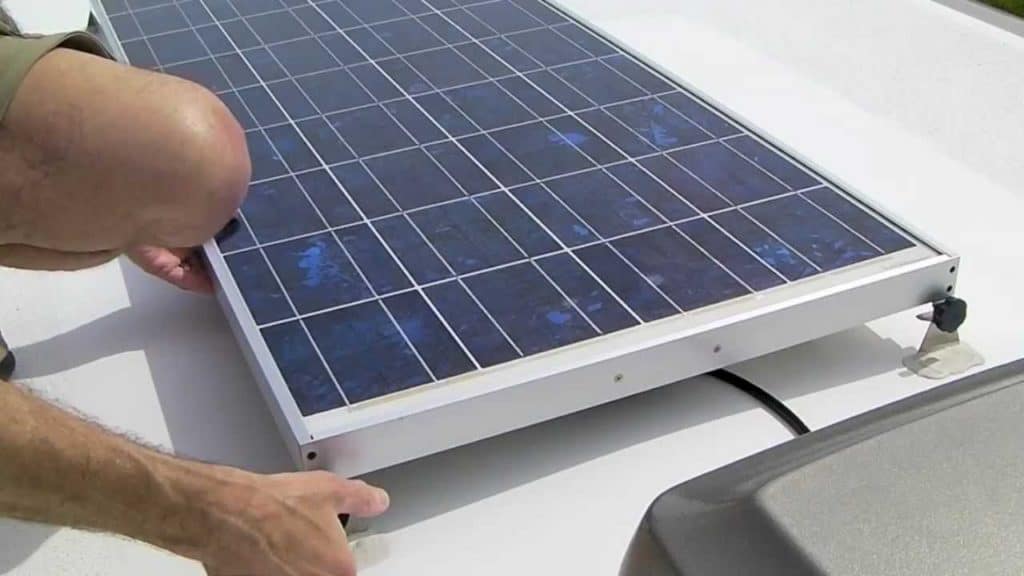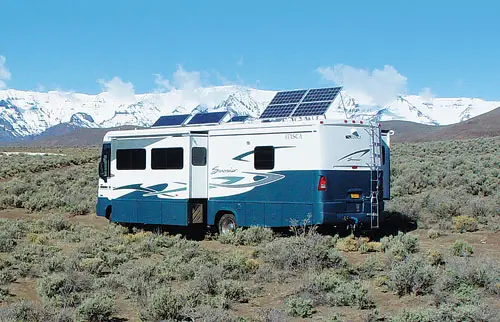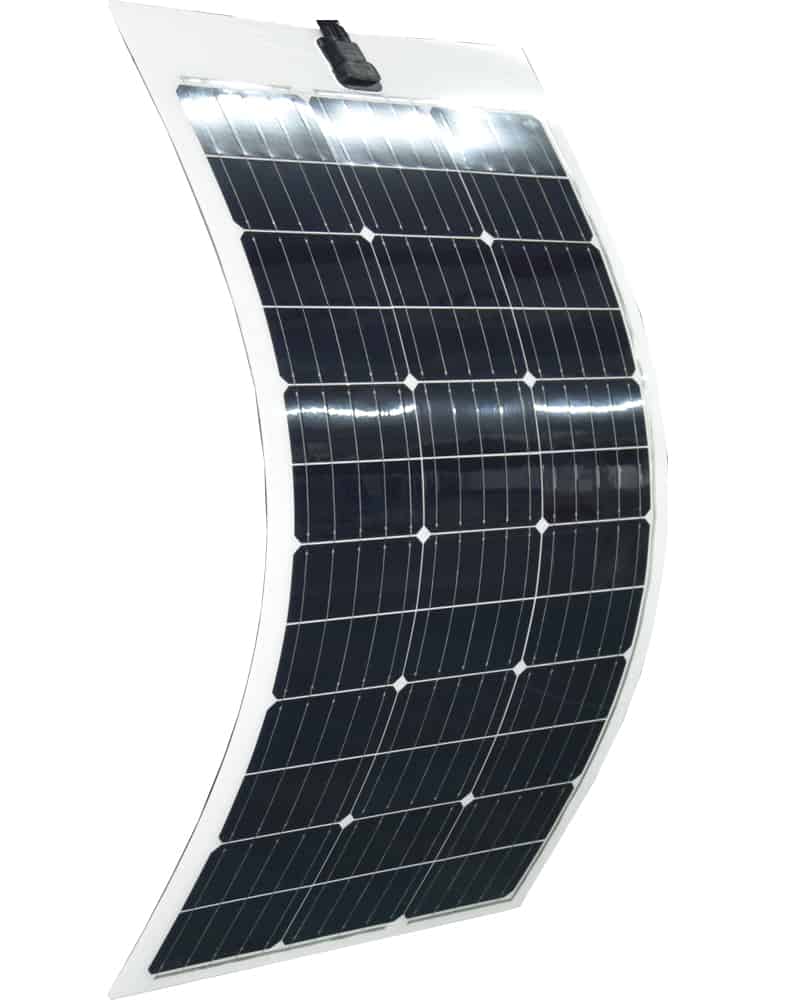Do you ever take a day off, slip on some bikini-wear or swimming trunks, and head on over to the beach to get that summer-prepped tan on a beautiful, sunny day?
What about when you wake up from that relaxing period to find that instead of getting that amazing tan, you’ve wounded up becoming a hot red lobster?

Just like our concerns on being baked, concerns have also risen on whether flexible solar panels can overheat and pose a danger, alongside possible damages to material.
If you ask most people, they would probably agree with the idea that putting a
If flexible solar panels get too hot, they can overheat. Once a
In other words, flexible solar panels can indeed overheat. If your
Depending on the application that you are using solar technology for, the effects of overheating can be bigger or smaller. If you intend to use solar technology to power some solar LED camping lanterns that serve very small applications, the effects of overheating can be neglected. However, on large scale camper-van solar systems the effects of overheating on solar panels can be considerable.
What Causes Solar Panels to Overheat?![]()

Heat factor
When we think about sunshine we often think about two main factors; heat and light. These factors are very much in play when it comes to designing and installing a solar panel array that is made to harness solar energy in the most efficient way possible.
The light component of sunshine is essentially what a flexible panel is designed to capture and use to produce electrical energy. Meanwhile, the heating element of sunshine can be detrimental to this process.
If the solar panel module is too close to the roof, then there is not enough airflow behind it, which also leads to higher temperature values, further losses in power, and reductions in voltage values as well.
Airflow factor
Let’s think about a typical
It is also important for any
Air circulation behind the
The effect of temperature on solar panel efficiency

Just as with any other electronic equipment,
Thus, warmer temperatures will always mean less output for flexible
Manufacturers rate their products’ susceptibility to temperature in the form of the temperature coefficient, which is expressed as a percentage per degree Celsius.
It is standard practice to test solar panels for power output at 25 °C. So, if a panel is rated to have a temperature coefficient of -0.50% per °C, that panel’s output power will decrease by a half of a percent for every degree the temperature rises about 25 °C (77 °F).
Most solar panels are built to withstand heat up to 149 degrees. At that point, solar-cell efficiency will begin to decline significantly, and it likely won’t retain any more heat. If you were to touch these panels at this temperature or beyond, it could burn your skin slightly. Plus, your energy efficiency falls by about 60 percent.
Can Heat Cause Permanent Damage to flexible solar panels?

Solar panels go through a lot of rigorous testing before they are certified for use in a solar system. They are exposed to extreme levels of humidity as well as extreme heat and cold ranging from 85 degrees Celsius to negative 40 degrees.
Once they pass these intense tests, they are deemed suitable for sale and installation. Owners can rest assured that their solar panels will be able to stand up to even the worst weather conditions without breaking.
Although heat and humidity can do a lot to reduce the efficiency of a
How do I prevent my flexible solar panels from overheating?
Solar panels are designed with protective measures, but it never hurts to do your homework and do your part by keeping your panels cool through regular maintenance and inspection.
In the process of making solar panels, certain steps are taken to protect the panels from overheating.
Regardless of which panels you decide to use, there will always be some energy output loss due to heat. However, there are several ways to mitigate the effects of hot temperatures on solar panels.
Method 1
A basic technology employed by most panel manufacturers is to use a thermally conductive substrate to house their panels, which helps vent heat away from the glass layers of the module.
This step involves attaching a substrate on the glass layer of the solar panels using thermal conductive cement/back sheets.
Method 2
Elevate the solar panels a few inches from the roof to allow cool air to circulate in between. Solar panels use a plastic structure and are typically glued down to an underlying structure, thus they transfer heat to the structure they are glued to.
Make sure air can flow under the panel. Solar panels to keep performing at 100% must be kept cool. Air circulation behind the module is necessary to keep the module cool and to reduce thermal losses as well.
The best system is to mount each panel on top of a sheet of 3mm aluminum composite sandwich (ie typically thin aluminum sheets with a layer of polyethylene or similar between them). The glue between the panel and the aluminum sandwich would usually be a marine-grade adhesive (available in large DIY warehouses).
The roof inside the van is now cooler below the panels which are getting cooled underneath, so their efficiency is kept at a peak, they are more rigid and less susceptible to damage/cracking/flexing/bending.
Method 3
Additional steps that people have taken include the following – adding a ventilation system, setting up a bypass valve, and fans.
Method 4
In a hot climate environment, you must maximize air cooling, therefore you must install a ground mounting system to allow the module to cool itself as much as possible.
Important: One thing to note, however, is that you never want to spray your solar panels with water during the hotter parts of the day. Doing so can irreparably damage your panels. If you want to clean your panels, only do so in the early morning or evening while it’s cooler.
Conclusion
If you do live in a climate that is warm and sunny throughout the year, you may want to invest in higher-end flexible solar panels that come with a lower temperature coefficient.
Sunpower, Panasonic, and REC manufacture flexible solar panels with some of the lowest temperature coefficients available in the industry. If you expect that the surface temperature of your roof will climb above 25 °C for a significant portion of the year, consider getting quotes from solar installers who offer these higher-end panels.
